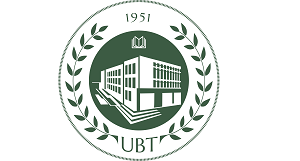1Faculty of Agriculture and Environment, Agricultural University of Tirana
2Ministry of Agriculture and Rural Development, Albania
3International Centre for Advanced Mediterranean Agronomic Studies – Mediterranean Agronomic Institute of Bari (CIHEAM IAMB), Italy
*Corresponding author e-mail: roland.cela@giz.de
Abstract:
Albania has a total area of 28,748 km2 but only 16.2% is located below 100 m.a.s.l. The pedological landscape is very diverse, with good fertile soils mostly located on the Western coastal floodplains and in the inland valleys spread throughout the country. On the other side there are as well soils with saline, sodic, acid, magnesial properties and poor physical characteristics (making about 120,000 ha). The agriculture land covers about 700,000 ha of agriculture land (making approximately 24% of the national territory) but recent data show that roughly 59% of that is cultivated, the rest is either left fallow or abandoned for many reasons (bio-physical or socio-economic). Finally, 209,353 ha or 31% of total agriculture land is irrigated, a figure that is lower from what was the irrigated area until the late 90s. The land reform of 1991, which brought about a radical change in land tenure in Albania and on the property rights over agricultural land (from public to private ownership), is one of the biggest reforms ever to be undertaken in Albania. Through the implementation of law no. 7501 “On Land”, land was divided equally between the members of the cooperatives and the employees of state agricultural holdings (farms) according to the quality and productivity of the land, as well as according to the number of the family members resulting to be registered in the civil registry by August of 1991. One of the most positive outcomes of the land reform was the transferring of a vital asset, in this case of land, to the benefit of the rural families. Nonetheless, the high level of fragmenting and the establishment of small farms led to a decrease in the agricultural production, the use of non-adequate technologies, land degradation and other negative impacts in the agricultural sector that affected most of the rural population. Poor rural infrastructure and low income are the main factors that have led to the migration of the population towards urban areas and abroad. Land consolidation is a term that has been traditionally used to refer to the measures attempting to diminish the effects of land fragmenting through regulation in the farm structure. Land consolidation is known to be an effective instrument allowing the farmers to have a smaller number of parcels but of a bigger size. Whereas land market plays an important role in the creation of more farms with a suitable structure, experience shows that market in itself is not sufficient in those situations where farms are small and extremely fragmented. Land consolidation may be used to help farmers to increase the size of their parcels. Through improvement in the structures of the farm, land consolidation may help to stimulate the development of competitive farms through increase in the agricultural production, low production costs and improvement of quality. In addition to this, land consolidation has been used to support the policies of rural development. Land consolidation has a long tradition in a number of west European countries and in most of these countries it has been one of the main instruments for the implementation of the projects related to the development of public infrastructure, environmental protection, adaptation to the changes in land use, etc. Land consolidation in Albania could be accelerated through structural reforms and incentives that encourage farmers to cooperate with each other through establishment of Farmer Associations that are specialized in the cultivation of specific crops or crops with similar eco-physiological requirements. This way the farm size area could increase, modern technologies are implemented, marketing instruments are implemented to protect farmers from trade speculations while each one of them retains his property title on the land.
Keywords: land consolidation, transaction, land fragmentation

